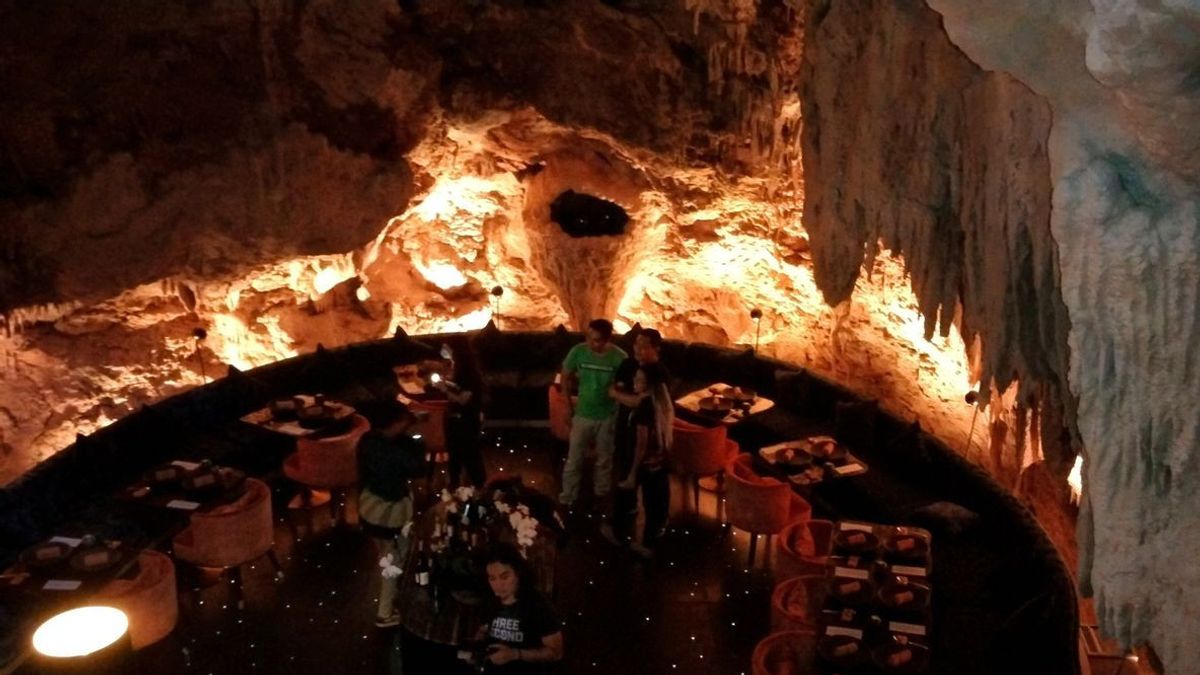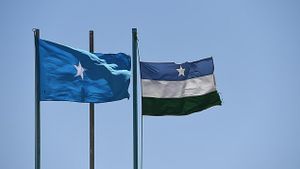BADUNG - The results of the study of a cave located in the area of The Edge Hotel, Uluwatu, South Kuta, Badung Regency, Bali, which was transformed into a luxury restaurant The Cave, is not an Object of Suspected Cultural Heritage (ODCB).
This is based on a technical study from the Bali Province Cultural Conservation Preservation Center (BPCB), together with a team from the Archaeological Study Program, Faculty of Cultural Sciences, Udayana University (Unud), and the Association of Indonesian Archaeological Experts (IAA) Bali-NTB-NTT Data Communication.
Head of the Badung Regency Culture Service, I Gede Eka Sudarwitha, said that based on a technical study, the cave was a cavity in a rock that was in the ground. The cave was discovered during drilling activities.
"There are no traces of human activity, there are no reliefs on the walls of the cave, then there are no ancient relics. It's a cavity in the ground if the cave has a mouth", said Sudarwitha during a press conference at the Badung Culture Service office, Bali. , Monday, July 25.
From the observations of the study team, this large cave-like cavity is thousands of years old. If Hotel The Edge takes advantage of the cavity in the ground, the manager must complete a permit from the local government.
"The use of it, of course, must complete the permit. It must carry capacity and maintain security so as not to landslides and other things that may be local wisdom. Because, whatever in Indonesian society, when it is in the ground, specific things are traditional values that really need to be preserved", said Sudarwitha.
From the research, the cave which was turned into a luxury restaurant The Cave is located in a karst solutional landscape area, with limestone or limestone lithology.
Dry environmental conditions with very limited water content on the surface, but have underground passages that form cavities or small passageways as waterways.
In addition, based on the team's observations, there is no cave door connecting the cavity to the outside. Likewise, there are no hallways that connect with other cavities, so it is a single cavity or room.
The large cavity measuring 12 meters long and 7 meters wide and 6 meters high is a natural cave with interiors in the form of stalactites, stalagmites, and pillars. Until now, the formation of the cave is still formed, marked by the presence of water droplets and seepage in some parts.

Head of the Badung Regency Culture Service (Disbud), I Gede Eka Sudarwitha during a press conference, Monday (25/7). (PHOTO: Dafi-VOI).
In addition, from the observations of the study team on the condition of the cavity, there are already floor stages, equipment, equipment, and interiors with adaptive patterns to the surrounding characters so that they are not conspicuous, except for the interior of the alcove resembling an elephant cave, and statues.
Meanwhile, most of the cave floors have been covered by a permanent floor stage. Some of the floors are tiled, especially on the west side to connect with the small room and on the east side, there is still a visible cave floor and no soil layer, only some new ruins.
Based on observations outside The Cave, no indications of past or ancient human activities were found except for traces of activity since the construction of the hotel.
Several Residential Caves around The Cave are objects of suspected cultural heritage (ODCB) at this time, namely Selonding Cave and Karang Boma Cave.
SEE ALSO:
Meanwhile, the distance between The Cave and Selonding Cave is about 1 kilometer but there is no evidence of a relationship between these two locations. Likewise, the absence of archaeological findings around The Cave indicates that this area has no such relationship.
Then for observations inside The Cave of the walls and floor surfaces, there were no indications of past human activity or no archaeological findings.
Based on these observations, it can be concluded that The Cave is a natural cave without an entrance and only made a door after its discovery in 2014.
"There are no archaeological remains or indications of past (ancient) human traces. Based on these two indications, The Cave can be declared not as ODCB. Seeing the unique concept of using caves by the management of The Edge, we recommend that managers participate in preserving and maintaining the existence of the cave and use it while still paying attention to the principles of environmental conservation", said Sudarwitha.
The English, Chinese, Japanese, Arabic, and French versions are automatically generated by the AI. So there may still be inaccuracies in translating, please always see Indonesian as our main language. (system supported by DigitalSiber.id)
















